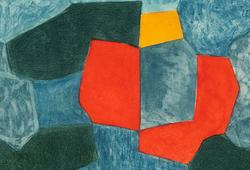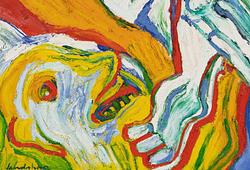A rare pair of '100 boys' tea caddies, Qing dynasty, 18th/19th century.
Rectangular shape, decorated with a procession of '100 boys' surrounded of a continuous lotus scroll in famille rose. Measure 9.3x6.2x14 cm.
Chips.
Alkuperä - Provenienssi
Property of a Finnish private collector who purchased it at Bukowskis in the 1980's.
Muut tiedot
The depiction of 'a hundred boys at play', representing the wish for many sons, was a popular theme in the decorative arts of the Ming and Qing dynasties. The 'hundred boys' refers to King Wen of the Zhou dynasty who had ninety-nine sons and adopted one more to make one hundred. In the present vase, each of the boys are engaged in activities potent with symbolism: the first character of 'lantern' is a pun for 'bumper harvest' (fengdeng), which equates with peace, while the boys carrying lanterns in the shape of a fish (yu) is a pun for 'abundance'. Furthermore, the motif of a boy carrying a lotus leaf dates back to the Song dynasty in which boys carried lotus leaves in procession in the festival in the seventh month, and the boys carrying osmanthus branches coupled with the flowering cymbidium trees growing from amongst the rocks stand for distinguished sons and grandsons (guizi lansun).



















































